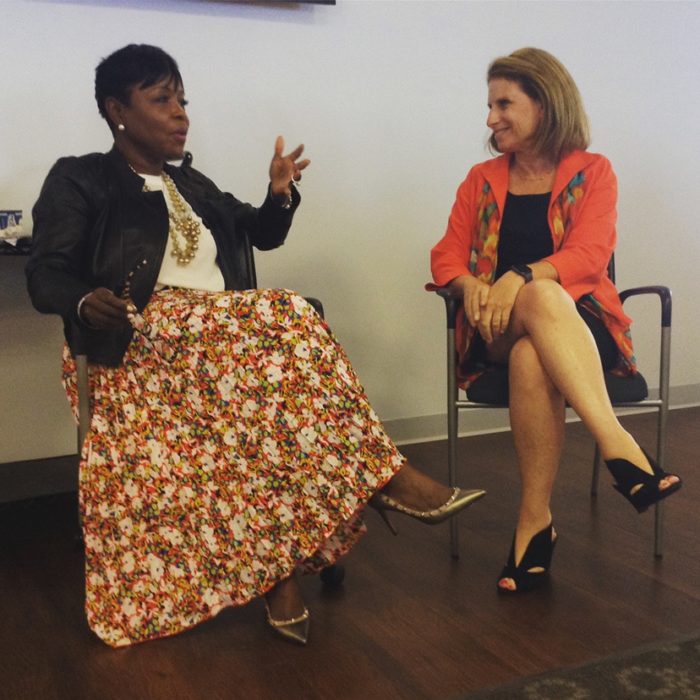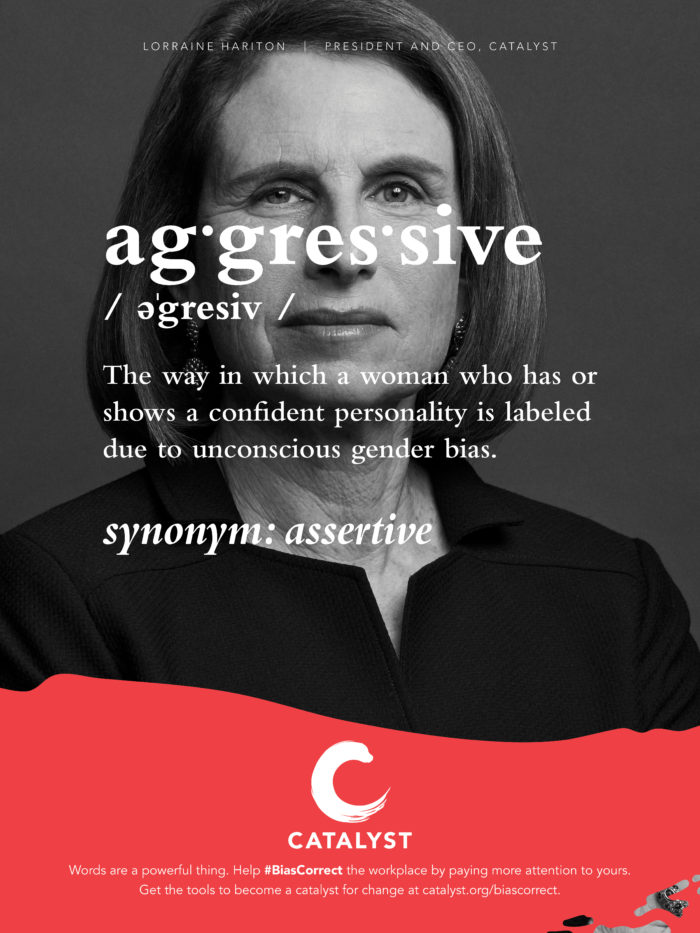The 2019 International Women’s Day theme is “Balance for Better.” The more I think about that campaign, the more it resonates; it really gets at the heart of what drives Catalyst, and the people who work here, including me.
Catalyst was founded in 1962 by Felice Schwartz. She was a Smith College graduate, wife, and mother. When her youngest child started kindergarten, she began looking for opportunities to join the workforce. In the early 60s, those opportunities didn’t exist for women like her—educated, willing, and still responsible for the children when they came home from school at 3.
From that beginning, Catalyst has evolved and grown, as has our vision for “balance for a better world.” Now, Catalyst partners with some of the world’s most powerful CEOs and leading companies to help build workplaces that work for women now, and in the future.
We need managers to make balanced judgments about women and their skills and potential instead of relying on old stereotypes and assumptions. And we need organizations to have more balance in the types of behavior and leadership styles that are considered acceptable for women from all backgrounds, not just the few who’ve managed to make it to the top.
This theme of “Balance for Better” also strikes a chord with me, personally. In many ways, my career is a product of Felice’s work and vision. I joined IBM in 1977 and worked there for 15 years in part because they had an incredible culture. It was so balanced—especially for that time—that I decided to return to IBM after taking a leave to get my MBA at Harvard. And, it was a good decision.

IBM invested in me, valued me. I had role models and mentors. The organization enabled me to forge a successful career while raising a family. Paying it forward became a lifelong passion of mine and led me to Catalyst last year.
Are Workplaces Better and Balanced?
Many companies today are more reflective now of the diverse populations they serve. But balanced? Numbers tell that story.
Women represent about 51% of the US population. They earn 60% of all master’s degrees and control or influence more than 70% of consumer spending.
Yet only about 5% of CEOs in corporate America are women.
Only 26.5% of executives and only about 21% of board seats are held by women in the S&P 500.
And women of color hold only 4.6% of Fortune 500 board seats.
Yet, in 2016, Credit Suisse found that companies where women hold 25% of decision-making roles generate 4% higher cash flow returns on investment. When women represent half of senior managers, these companies produce 10% higher cash flow returns on investment.
Researchers also found that companies with at least three women on their boards produced median gains of 10% return on equity and 37% Earnings Per Share. The boards with zero women on their boards had negative median changes for return on equity and Earnings Per Share.
Other research shows that the more included employees feel, the more innovative they reported being in their jobs, and the more they reported going above and beyond the “call of duty” on their teams.
Having talked to a lot of CEOs and other executives in my travels—I know they understand this. They know that the most successful leaders and organizations balance integrating rapid technological advances with building inclusive teams and nurturing all talent.
They know that if they don’t focus on diversity they won’t be around in 20 years. They know that if they don’t “Balance for Better,” their balance sheets will definitely not be better.

Men Belong Here, Too
Since the theme for today is “Balance for Better,” and I’ve been talking a lot about gender diversity and women, I want to balance that out by speaking about men. Men are the leaders of most organizations—they hold the most power and therefore their voices are vital to the advancement of women and people of color.
Men need to be women’s allies—not just by attending an event like the Catalyst Awards (although I hope you will). Allyship benefits both women and men. In workplaces where gender equality is the norm, men are freer to be themselves and step outside of stereotypical ideas of what it means to “be a man.” They can ask for help when they need it and express their emotions instead of bottling them up. Men are more likely to take advantage of work-life policies and spend more time with their families. And they can also have better relationships with their co-workers, spouses, and children.
Men are needed to make all this happen. Women can’t “Balance for Better” by ourselves.
Which Brings Us to a Common Problem
Women and men both share a very human problem: unconscious bias. Each of us can gain awareness of our biases and work to correct them.
To help, explore our new #BiasCorrect campaign, launched today for International Women’s Day. It tackles the implicit, everyday acts of gender bias that occur in most workplaces with the words we use or don’t use to describe women.
Something that seems so small in the moment—a word choice—can accumulate over time until it tips the balance of a workplace, society—power—away from women.
Create your own #BiasCorrect photo to share on social media. Not only will you help spread the word about this valuable tool, but you’ll provide us with insights on who we’re reaching and who we still need to connect with.
Today—and every day after this—let’s do everything we can to “Balance for Better” by correcting our biases, building more inclusive workplaces, and creating a world where everyone can thrive.

Lorraine Hariton
President & CEO Catalyst
Lorraine Hariton is President and CEO of Catalyst, a global nonprofit working with the world’s most powerful CEOs and leading companies to help build workplaces that work for women. Catalyst’s vision and mission to accelerate progress for women through workplace inclusion has been a lifelong passion for Lorraine. She is honored to lead the organization and help write the next chapter in its 60-year legacy. Lorraine brings a diverse and robust background in technology, innovation, and partnership to her role at Catalyst. Her extensive career includes senior-level positions in Silicon Valley and leadership roles across the private, nonprofit, and government sectors. In 2009, President Obama appointed her to the Special Representative for Commercial and Business Affairs at the US Department of State. Most recently, Lorraine was Senior Vice President for Global Partnerships at the New York Academy of Sciences. Lorraine has been involved in women’s advancement leadership initiatives throughout her career. At the New York Academy of Sciences, she created the Global STEM Alliance and its 1000 Girls, 1000 Futures program, a global mentoring initiative to help girls pursue careers in STEM (science, technology, engineering, and math). At the US Department of State, Lorraine established the Global Entrepreneurship Program, the WECREATE program for women entrepreneurs, and the Secretary’s Council on Women’s Leadership. She has served on several boards of organizations committed to advancing women in the workplace, including the UN Women Global Innovation Coalition for Change, the Stanford Clayman Institute for Gender Research, and Watermark. Lorraine is the proud mother of Glen and Laura and enjoys spending time with her grandchildren. She is also an accomplished triathlete who enjoys cycling, tennis, and all things outdoors. Lorraine holds a Bachelor of Science degree in Mathematical Sciences from Stanford University and a Master of Business Administration degree from Harvard Business School.